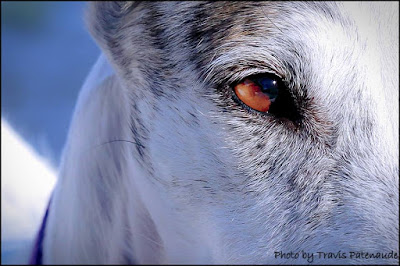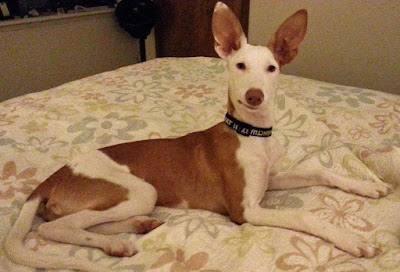 |
| This doesn't smell like something to eat... |
It's no secret that we're huge fans of The Honest Kitchen here at Rubicon Days. The Ginger Sisters eat their human-grade, dehydrated food for breakfast every day, and I regularly give them Beams, Quickies, Nudges and Smooches as treats. They use simple, all-natural ingredients and I trust that the company cares about my animals. I was therefore very excited to learn that The Honest Kitchen was branching out into dog shampoo with their new Sparkle Shampoo Bars.
 |
| I don't remember "shampoo tester" being part of my contract... |
The Ginger Sisters love being product testers when it comes to treats, and while they were long overdue for baths anyway, they did not share in my enthusiasm about trying the Sparkle Bar. I chose the apple cider vinegar bar for its simplicity. It has the fewest ingredients (Apple Cider Vinegar, Goat’s Milk, Saponified Oils of: Coconut, Karanja; Castor oil), and even though neither Ruby or Boca have especially sensitive skin, I know that vinegar is a natural deodorizer. I liked the fact that there were no superfluous fragrances.
 |
| Good girl, Ruby! |
The apple cider vinegar Sparkle Bar is definitely no-frills. It is a naturally colored soap-like bar that fits in the palm of your hand. It did not smell bad, but it isn't something you would sniff at repeatedly on purpose. This bar is all practicality, and I liked that about it. I coaxed the Ginger Sisters into the bathroom for their baths (Ruby was not falling for the cheese bribery and I ended up having to put her leash on and leading her in) and gave the Sparkle Bar a test lather.
 |
| I was told there would be cheese. |
I was very pleased with how many suds the Sparkle Bar produced, and also how easy it was to lather up the dogs' coats wherever I wanted, including their chests and bellies. It's awkward sometimes to try and juggle holding the dog and getting the right amount of shampoo out of the bottle. I again appreciated the lack of added fragrance, because I think the dogs can find them off-putting. Their idea of good-smelling is, after all, much different from ours, judging by the disgusting things they would like to anoint themselves with, such as Eau de Worm Mort.
 |
| Silly little monkey. |
I can tell that the bar will last a long time (according to the product information, about 18 baths for a 30 pound dog) so I think it's a good value. I am interested in trying the two other varieties as well. The Ginger Sisters were happy to have their baths behind them for another couple of months. Ruby adores the drying-off part and wiggles around under the towel being goofy. Then came the best part of all: post-bath zoomies!
The girls' coats have stayed clean, shiny and soft all week following their baths. The bar left virtually no scent behind - nothing fake, flowery or doggy. Ruby's fur just has that subtle, warm fur scent and Boca has been shedding significantly less, a difference that my dad even remarked upon. I let the bar dry out in a soap dish and then put it back in the box until the next use. I had a dog shampoo that I really liked previously but I think The Honest Kitchen Sparkle Bar is my new favorite.
Disclaimer: I was provided a Sparkle Shampoo Bar from The Honest Kitchen in exchange for my honest review. All opinions expressed are my own and I only publish reviews for products I feel comfortable using in the day to day life of my pets.























